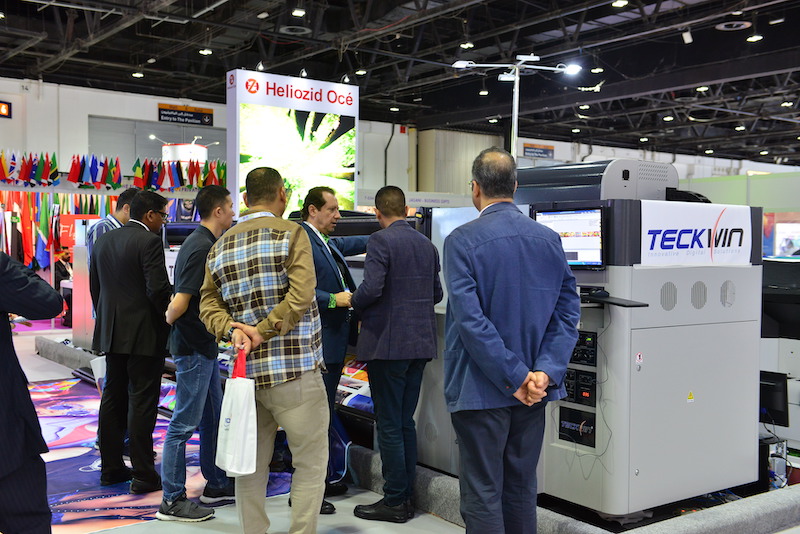Players within the digital textile printing industry in GCC can capitalise on the market growth triggered by the eCommerce industry and the exponential demand by the millennials and the rising GenZ population. Due to the growing social media revolution, every individual is currently looking at wearing something new in each of their individual social posts. Similar trends are visible in the home furnishing industry as well. SGI Dubai 2020 aims to bridge this gap by attracting several leading brands from across the globe to cater to this burgeoning demand in the Middle East and Africa region.
Such trends are only going to grow further and this will significantly propel the demand in the upcoming years. As per Smithers Pira, the market will touch AED20 billion by 2023 with a compounded annual growth rate (CAGR) of 11.6%. “Digital textile printing industry is a huge untapped market for the GCC players and it’s the right time for them to grab these opportunities. They will also need to innovate and have state-of-the-art equipment to cater to these demands. Currently, textile printing is a mature global market, but as per reports digital textile printing still forms less than 5-7% of this global industry, so there is a huge window of opportunities awaiting the equipment manufacturers,” stated Sharif Rahman, CEO, International Expo Consults.
“GCC houses thousands of retail destinations, including several high-end furniture brands and these numbers are on the rise. Millennials are one of the key propellers of the digital textile printing market as they are increasingly preferring creatively designed, cost-effective and high graphic printed apparels and textiles developed through digital textile printing mechanism. T-shirt and home furnishing printing are expected to be the key end-use application for digital textile printing. Also, the dramatic shift in the buying patterns of millennials has triggered an increase in popularity of the stylish textile designs, both through eCommerce and actual brick and mortar stores. This is expected to boost the growth of the global digital textile printing market,” added Rahman.
SGI Dubai 2020 will also have several global environmentally friendly ink manufacturers. In terms of volume, sublimation is the most widely used ink for digital textile printing, accounting for the largest market share within the digital textile printing market. Currently, the most commonly used digital textile printing techniques are Direct to Fabric (DTF) and Direct to Garment (DTG) segment, and this accounts for over 80% of digital textile printing market share.
“We have seen a growth in demand from across various vertical industries and we foresee this growth due to the rapid expansion of retail malls and hospitality industries,” added Sharif Rahman. Currently, the Asia Pacific region has the largest market share for textile printing, followed by Europe and North America. Within Asia, China and India alone hold the largest market share for textile printing globally. Asia-Pacific region is expected to witness the highest growth and maintain its dominance in the forecasted period.
“Fast-growing population not only in GCC but across the globe will further increase the demand and GCC players should devise a strategic plan to stay ahead, collaborate with the right strategic partners and capitalise on these potential opportunities. SGI Dubai serves as a bridge between several players who are based in different geographies and help them to establish a firm footprint in the MENA marketplace,” added Rahman.
The last edition of the SGI Dubai show attracted close to 330 plus international and regional exhibitors showcasing the latest in UV printing, textile printing, retail, LED and various signage technologies. Thousands of visitors graced the show from across the globe including the Middle East, Africa, Asia, and Europe. This is an ideal converging point where visitors and exhibitors can reach out with architects, sign makers, print and production manufacturers, media agencies, real-estate developers, brand and image consultants among others.
